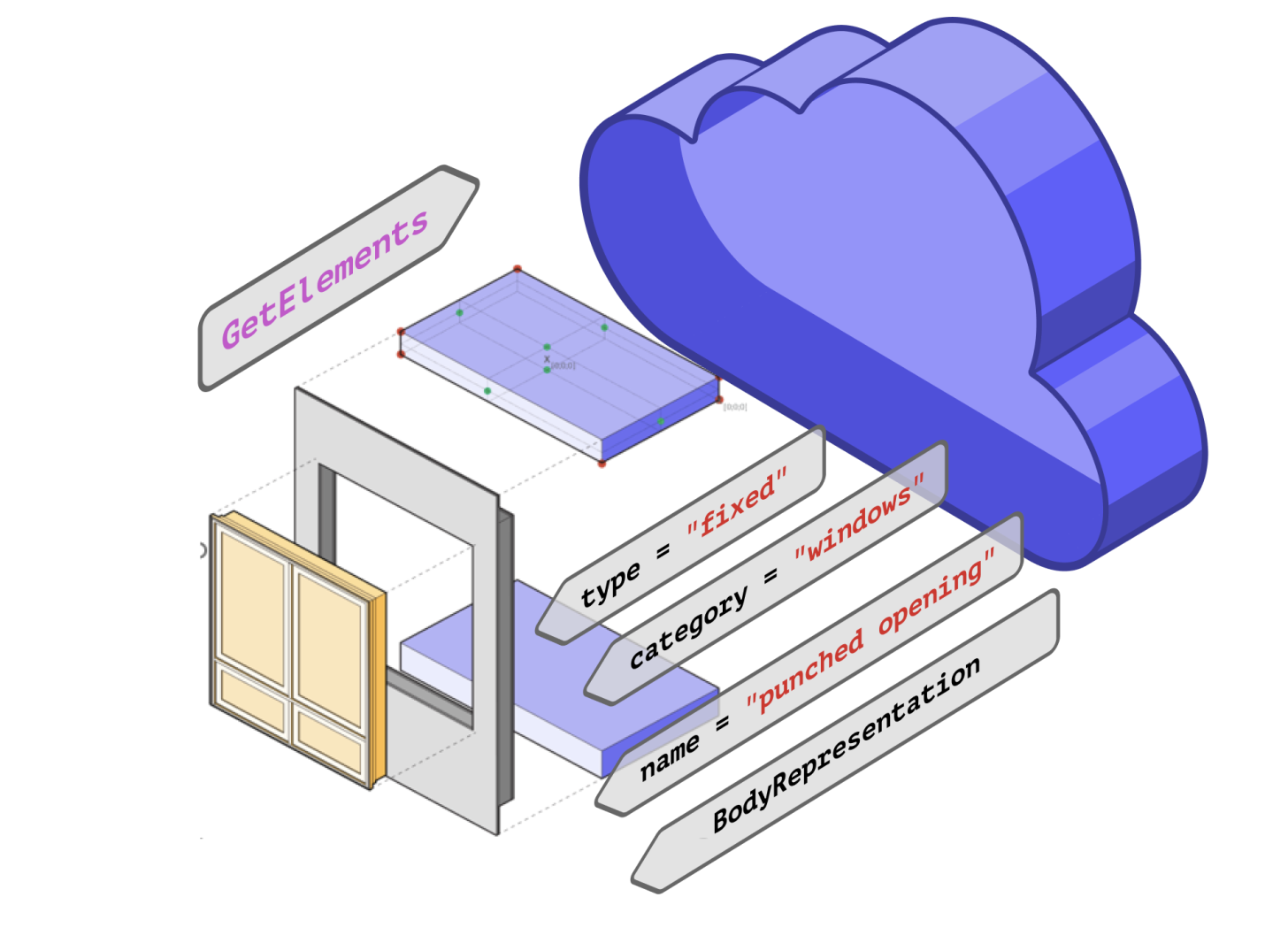Design and construction projects rely on geometry as the backbone of collaboration, analysis, and downstream workflows. With the AEC Data Model API and the Data Interoperability SDK, customers can retrieve, transform, and exchange granular Revit geometry in ways that simplify coordination and accelerate execution across the project lifecycle.
The AEC data model API makes it straightforward to query geometry for one or many elements at once. Teams can pull resolved representations as binaries, retrieve element origins, and extract axis for element instances. Transformation details are preserved so each element remains precisely positioned in 3D space, ensuring the data is reliable.
Using the Data Interoperability SDK, Revit geometry stored in AEC data model can be translated into IFC files (version 4) for downstream exchange supporting interoperability. For teams building deeper integrations or high-performance applications, the Data Interoperability SDK delivers geometry as in-memory mesh objects, making it possible to work with data directly, without relying on file-based exchange. This approach unlocks fast, interactive, and programmable workflows that are essential for real-time analysis, responsive applications, and AI-powered agents.
These capabilities translate directly into high-value, real-world outcomes. BIM Managers can automatically generate Room Data Sheets by validating which fixtures belong in each room and streamlining phased delivery and installation. Casework fabricators can extract custom elements like lobby desks and bring them into fabrication tools to accelerate detailed design with precise geometry. Beyond procurement and fabrication, in-memory geometry workflows make it easier for teams to run analyses, perform quality checks, generate takeoffs, and iterate on designs without the delays of repeated file handling. Ensuring geometry can flow seamlessly into both Autodesk and non-Autodesk applications, breaking down silos and empowering greater collaboration across disciplines.
Making this data accessible also lays the groundwork for AI-powered workflows. With consistent, structured data access, AI Agents can run tight decision loops and orchestrate multi-step tasks across applications and surface actionable insights much faster.
By making Revit geometry accessible through APIs, translating to IFC, and exposing mesh, in-memory building blocks for developers and AI Agents, Autodesk is enabling teams to save time, improve accuracy, and enhance interoperability. This isn’t just about retrieving data; it’s about connecting geometry to the tools, services, and intelligent agents that drive real-world outcomes, so projects move faster, smarter, and with greater confidence.
How to access Public BETA
To participate, join the AEC data model Geometry Public Beta. For updated documentation on how to use these features, please visit the developers guide.
How to get involved
Browse to the AEC data model public roadmap to keep an eye out for more updates, new capabilities, and improved features. For questions and support needs for AEC data model, contact us via Get Help page. For general information, questions and access to generally available capabilities, please visit the AEC Data Model API page.
Autodesk University 2025
If you’re attending Autodesk University this year, don’t miss my session featuring our customer, who will share how they’re leveraging the AEC Data Model to drive their business vision.
Thursday, Sep 183:00 PM - 4:00 PM CDT - MCC 104A
Stay tuned for a more technical blog coming in the near future.

